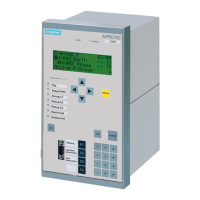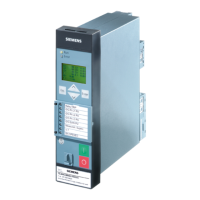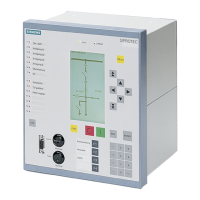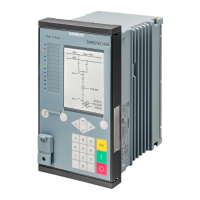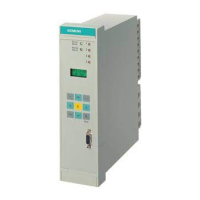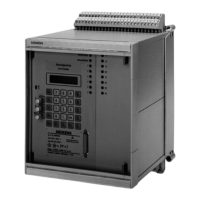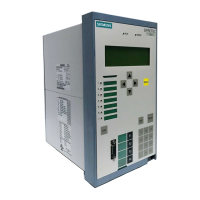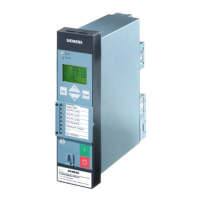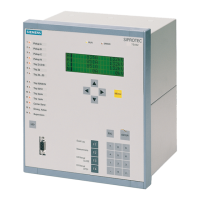2 Functions
162
7SD610 Manual
C53000-G1176-C145-4
Note
For overvoltage protection it is particularly important to observe the setting hints:
NEVER set an overvoltage stage (U
L-E
, U
L-L
, U
1
) lower than an undervoltage stage.
This would put the device immediately into a state of permanent pickup which cannot
be reset by any measured value operation. As a result, operation via DIGSI or via the
front display would be impossible due to the permanent pickup!
Phase-earth over-
voltage
The phase voltage stages can be switched ON or OFF in address 3701 Uph-e>(>).
In addition to this, you can set Alarm Only, i.e. these stages operate and send
alarms but do not generate any trip command. The setting U>Alarm U>>Trip
creates in addition also a trip command only for the U>> stage.
The settings of the voltage threshold and the timer values depend on the type of ap-
plication. To detect steady-state overvoltages on long lines carrying no load, set the
Uph-e> stage (address 3702) to at least 5 % above the maximum stationary phase-
earth voltage expected during operation. Additionally, a high dropout to pickup ratio is
required (address 3709 Uph-e>(>) RESET = 0.98 presetting). This parameter can
only be altered in DIGSI at Display Additional Settings. The delay time T Uph-e>
(address 3703) should be a few seconds so that overvoltages with short duration may
not result in tripping.
The U
ph
>> stage (address 3704) is provided for high overvoltages with short duration.
Here an adequately high pickup value is set, e.g. the 1
1
/
2
-fold of the nominal phase-
earth voltage. 0.1 s to 0.2 s are sufficient for the delay time T Uph-e>> (address
3705).
Phase-phase over-
voltage
Basically, the same considerations apply as for the phase voltage stages. These
stages may be used instead of the phase voltage stages or be used additionally. De-
pending on your choice, set address 3711 Uph-ph>(>) to ON, OFF, Alarm Only or
U>Alarm U>>Trip.
As phase–to–phase voltages are monitored, the phase–to–phase values are used for
the settings Uph-ph> (address 3712) and Uph-ph>> (address 3714).
For the delay times T Uph-ph> (address 3713) and T Uph-ph>> (address 3715)
the same considerations apply as above. The same is true for the dropout ratios (ad-
dress 3719 Uphph>(>) RESET). The latter setting can only be altered in DIGSI at
Display Additional Settings.
Overvoltage posi-
tive sequence
systemU
1
You can use the positive sequence voltage stages instead of or in addition to previous-
ly mentioned overvoltage stages. Depending on your choice, set address 3731
U1>(>) to ON, OFF, Alarm Only or U>Alarm U>>Trip.
For symmetrical voltages an increase of the positive sequence system corresponds to
an AND gate of the voltages. These stages are particularly suited to the detection of
steady-state overvoltages on long, weak-loaded transmission lines (Ferranti effect).
Here too, the U1> stage (address 3732) with a longer delay time T U1> (address
3733) is used for the detection of steady-state overvoltages (some seconds), the
U1>> stage (address 3734) with the short delay time T U1>> (address 3735) is used
for the detection of high overvoltages that may jeopardise insulation.
Note that the positive sequence system is established according to its defining equa-
tion U
1
=
1
/
3
·|U
L1
+a·U
L2
+a
2
·U
L3
|. For symmetrical voltages this is equivalent to a
phase-to-earth voltage.
www . ElectricalPartManuals . com
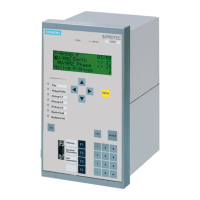
